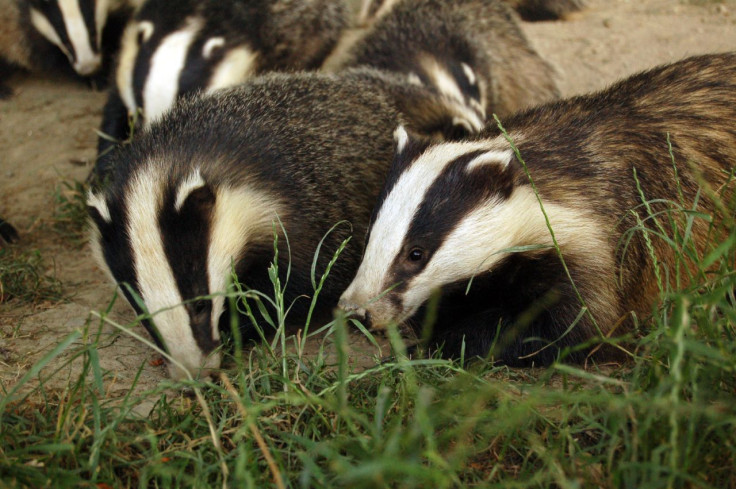More evidence against badger cull: Testing for bovine TB 'more effective measure'

Testing cattle for bovine tuberculosis is more effective in controlling the spread of disease than the controversial and widely-criticised badger cull.
Scientists at the Queen Mary University of London (QMUL) said regular testing is about 20 times more effective at halting the spread of infection than killing badgers.
The badger cull was approved by the government despite widespread protests and petitions last year. Department for Environment, Food & Rural Affairs (Defra) aims to destroy 70% of the initial population of badgers in key areas of the UK to see how effective, safe and humane the practice is. Details on the government policy can be found here.
However, scientific evidence shows the cull is ineffective at reducing the spread of bovine TB – a 10 year report found that culling results in only a small drop in cases of the disease.
QMUL scientists used computer models to evaluate different methods of controlling bovine TB. It is the first large-scale study to include the possibility of bovine TB being passed in both directions between badgers and cows.
They used a region containing 1.5 million cows, of which up to 1,500 might have the disease. Badger culling was found to reduce the number of cases by just 12, whereas testing for bovine TB every month led to 193 fewer cases.
Their model showed that frequent and regular testing could eventually lead to the disease being eradicated. Badger culling alone did not end in disease eradication.
Findings, published in Stochastic Environmental Research and Risk Assessment also showed that housing cattle in large sheds over winter could double the number of infected animals in a herd through cow-to-cow infection.
Matthew Evans, Professor of Ecology at QMUL, said: "Of the available Bovine Tuberculosis control strategies we believe that how frequently cattle are tested and whether or not farms utilise winter housing have the most significant effect on the number of infected cattle.
He said their model showed a "real-world" situation and can be used to predict the outcome of various control methods.
"Our modelling provides compelling evidence, for those charged with controlling Bovine TB, that investment in increasing the frequency of cattle testing is a far more effective strategy than badger culling."
Wendy Higgins, communications director of the Humane Society International/UK, told IBTimes UK: "This paper describing a sophisticated epidemiological model by a very reputable team is further evidence of what we already know - that cattle measures, properly implemented will have by far the greatest impact on tackling bovine TB, not shooting badgers.
"The biosecurity and testing regimes described are certainly feasible to implement, so it remains puzzling why Defra and the NFU remain reluctant to promote their use."
© Copyright IBTimes 2025. All rights reserved.






















